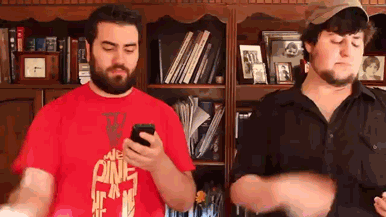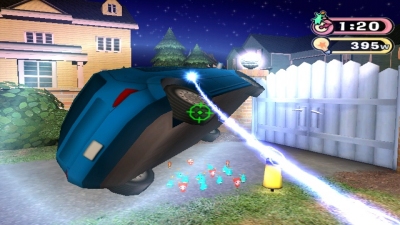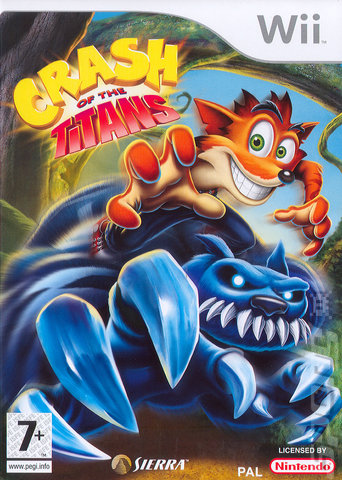And so, after a three-month long hiatus, the Wii retrospective
review series no one cares about taking place exclusively on a blog no one reads
finally continues. There are a lot of reasons for the delay, some good ones
being my acquisition of the Wii’s successor and a few games for that console as
well as my being absorbed in the excellent Japanese RPG developed by Namco,
Tales of Graces f. And also, Red Steel is horrible.
 |
| Really horrible. |
Yeah, sorry for the people who were actually following this
and looking forward to that review – all zero of them – but Red Steel, I found,
was a game so utterly heinous and bland that I couldn’t even bear to finish it.
Really. But in the interest of
fairness, I think I’ll go ahead and list off my grievances. First and foremost,
pointlessly sensitive controls that make the game a pain to play. Secondly, to
zoom in on enemies, you literally have to thrust the Wii Remote forward in a
mechanic that is one of the most awkward ways to use the motion controller I
have ever seen in my life. Third, the
story, predictably enough, is absolutely cringe-worthy. Fourth, the soundtrack
is bland and generic and the disgusting visuals overuse “FPS brown” to a
mind-blowing degree. Also, it would be dignifying the game too much to claim it
even has a framerate. Fifth, the
enemies actually dress in brown and
grey, meaning they’re often hard to see from any distance. Sixth, they are
always able to shoot you as if at point-blank range. SEVENTH, levels are designed like those of a Call of Duty game
except without any good hiding spots from the ridiculous enemies, confusing
layouts and no radar. EIGHTH,
it adds absolutely nothing to the FPS genre aside from some lame powers,
terrible IR and NINTH, simply
pathetic swordplay sections that can all literally be won by doing this:
 |
| Except with a Wii Remote. (*ahem* Credits to The Completionist, JonTron, and whoever made this a gif) |
Long story short, it was frustration heaped upon frustration
heaped upon frustration without a single redeeming quality to its name, and I
felt like playing a game I actually liked. Enter fellow launch title, Elebits,
a unique and quirky little adventure developed by Konami, and it’s by far the
best game I’ve played for this stupid retrospective so far aside from,
obviously, Twilight Princess. Now, I
will say that like with Banana Blitz, this is going to be a shorter review
because Elebits is a relatively simple game and there isn’t quite as much to go
over. Anyway, here we go.
Actually, I wasn’t quite sure going back to Elebits if I was
going to be praising it or ripping it a new bunghole. I remembered enjoying it
as a kid, but my standards weren’t exactly the highest then and there were a
lot of games I liked back then that I simply loathe now. But actually, Elebits is still pretty good. Of course,
the story isn’t going to leave the
most amazing first impression. At the beginning, it introduces us to a young
boy named Kai who lives in a world in which tiny creatures – the titular
Elebits – power all technology, and his parents are seemingly obsessed with
them. “They love Elebits more than me!” this whiny little brat laments, but one
night when he’s home alone, lightning crashes and all of the technology in the
house stops working. Now, armed only
with a Capture Gun, Kai must catch all of the Elebits in the most amazing of
adventures that will take him all through town and even to the amusement park wheee. Yeah, it’s trying to go for sort of a
charming storybook-type deal complete with a cheesy moral and all that good
stuff, but that’s best delivered with a main protagonist that’s actually
likable and voice acting that…actually counts as voice acting. But hey, Elebits
isn’t about the story. Elebits is about its gameplay, and that stuff is pretty
nice.
See, if you didn’t quite catch it from the summary there,
in-game you go around various areas collecting the tiny Elebits with your
Capture Gun until you reach an adequate amount of wattage to finish the level. Predictably
enough, the Capture Gun is controlled via the Wii’s IR sensor, and while it
does feel a little bit more sensitive
than it could, it’s more or less solid – a welcome departure from the insipid
torture-fest that is Red Steel. And that’s great, because the gameplay is
pretty dependent on the Capture Gun’s use. Catching Elebits isn’t all there is
to it – you have to find the Elebits
first and that requires your Capture Gun as well. Using the Capture Gun, you
can pick up and move objects about, turn doorknobs and other such turn-able
devices, open drawers and what-have-you, looking for the eponymous creatures.
 |
| Also, you can lift cars. |
Your Capture Gun is only able to carry so much weight at
first, but the capacity can be upgraded by levels by collecting Power Elebits.
These Elebits are found by activating appliances and other such objects that
require power, which become energized as you collect normal Elebits. Some of
these only need to be switched on to use, some need to be activated through
some other means and some require you to insert another object into them. Once
you activate these, Power Elebits come pouring out and, in later levels, normal
Elebits, making them that much more crucial to a level’s completion. It’s a
very unique gameplay style that uses the Wii’s capabilities surprisingly well
despite the gameplay’s simplicity, which is something that makes it stand out
not only amongst the launch titles but among the Wii’s third-party library in
general, and it’s a lot more fun than you’d think, too.
Part of the reason why is because it’s surprisingly
challenging. Noteworthy is that each mission has a set time limit and what this
means is that you not only have to be crafty and observant, but you also have
to be somewhat fast. Of course, every level is very detailed and has tons of
hiding spots, and the levels constantly grow in scale as you go through the
game. Spending too much time in one area can cost you a lot as well as waiting too
long to activate appliances. The higher your Capture Gun’s level, the larger
the quantities of Elebits that you’ll be able to find and some areas are even
blocked off to you if you aren’t at the proper level, meaning collecting Power
Elebits always has to be a priority. As the game progresses, new types of
Elebits are always introduced, some of which take more effort to catch, and
thus the game always keeps you on your toes.
There are also various other obstacles peppered along the
way, such as Black Elebits and small turrets run by other Elebits, which can
drain your Capture Gun’s durability. If the Capture Gun breaks, you fail and
have to restart the mission. Of course, to help you along the way are a number
of power-ups that give your Capture Gun a certain effect, protect you from
damage, or even give you an entirely different perk such as cancelling all
noise. Several missions throughout the game have some other arbitrary
restrictions or quirks, such as forbidding you from breaking too many objects, letting
the noise level go above a certain number of decibels, or in a few missions,
even…removing…gravity. But while it’s a bit random, it doesn’t seem completely
pointless. Actually, all of this really lends Elebits almost an arcade-like
feeling and a general sense of fun.
On the visual and sound side, the art design is very
stylized and the character designs, though cutesy, have a lot of personality to
them. The energetic and upbeat soundtrack is also something I found myself
consistently enjoying. What’s pretty disappointing is the framerate. Yes, it’s
a common sticking point in my reviews and maybe this sort of thing just annoys
me more than other people (perhaps due to traumatic experiences with Shadow the
Hedgehog, but I digress), but it’s a really
prominent fault on this game’s part, especially in the later levels.
Unfortunately, the gameplay, though a lot of fun, has its
fair share of hiccups as well. The knob-turning mechanic is a very awkward one
and really shows that this game was made in the Wii’s infancy and turns the otherwise
easy final boss fight into something cumbersome, annoying, and to an extent
physically painful. Boss design overall is pretty lame due to extremely easy difficulty
and general dullness, though there aren’t too many of them. And while the IR
controls are very good for a Wii launch title, pushing objects forward and
pulling them back with the Capture Gun is a difficult maneuver, as is breaking
objects such as power-ups against walls and floors. I also found that the
collision boxes for a lot of objects would often extend beyond the objects
themselves, which often caused me to grab hold of the object rather than an
Elebit or something else that I was aiming for behind it.
But all that stuff is pretty easy to get over when you
actually start playing the game. Elebits is a very original and very fun game
to play and is probably one of the strongest titles to come of the six-years
past Wii launch. It uses the controller very well to provide its own playing
experience, and flaws aside, it works great. The game is pretty long for what
it is, too, with almost thirty missions to its name. Consider picking it up if
you own a Wii or Wii U – you might just find something decent.
Well, anyway, the next game for the Wii retrospective is…Sonic
and the Secret Rings.
…
Help.












